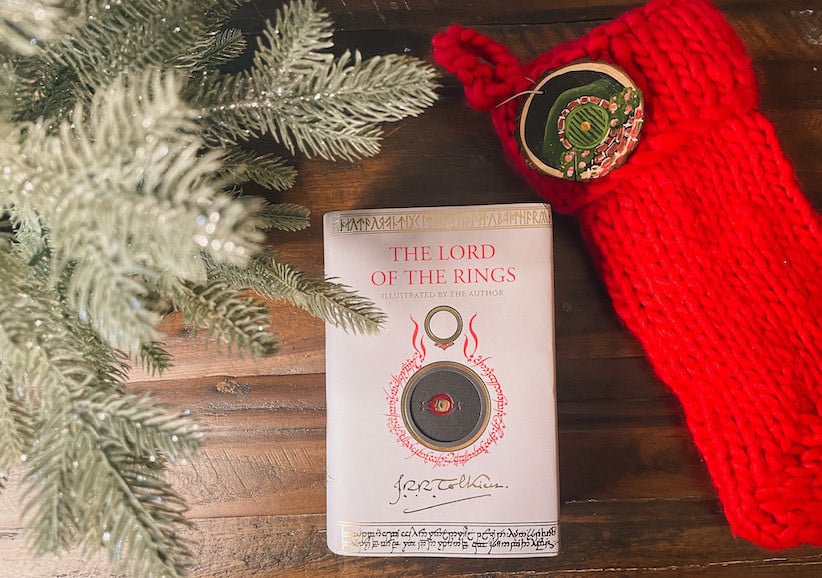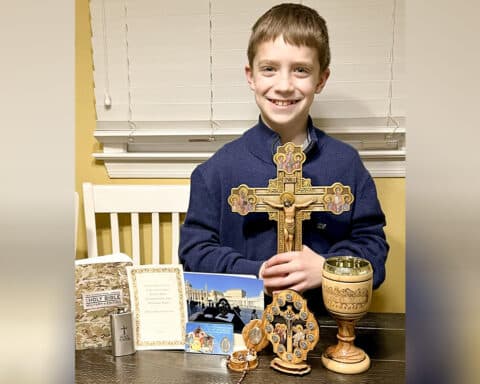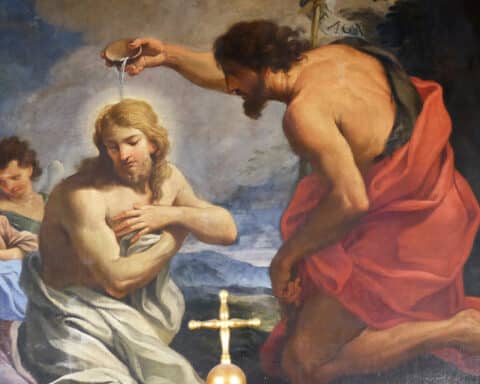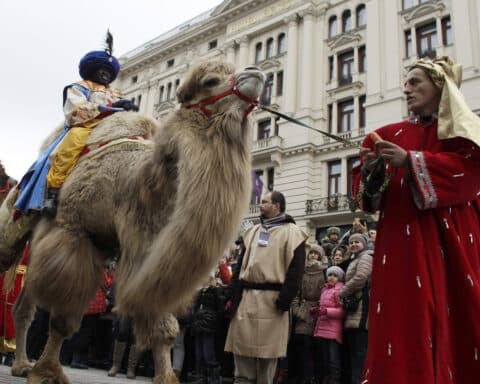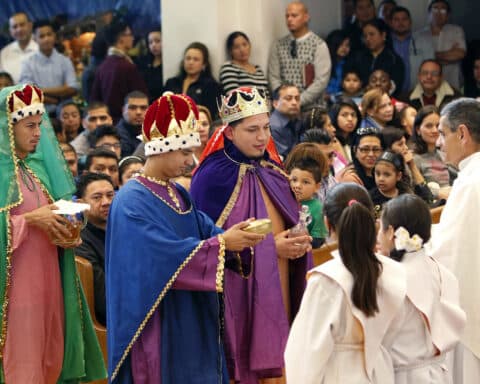J.R.R. Tolkien is best known for his stories of Hobbits, elves and magic rings set within his invented world of Middle-earth. At first glance, a new reader will encounter this world as one filled with inspiring themes of heroism, fellowship and light against darkness. But as one begins to dig deeper, readers will discover a mythology — a Legendarium, as he called it — woven together by the deeply Catholic philosophy of a devout man of faith.
Many readers may be surprised to learn that Tolkien himself was a devoted Catholic. While he wrote that “The Lord of the Rings” was fundamentally Catholic, Tolkien noted that almost all references to religion were deliberately left out or removed, while the religious themes were instead absorbed into the symbolism of the story itself. Tolkien’s works are not allegorical, allowing them to stand on their own as powerful works of literature; the themes of “The Lord of the Rings” are universal, speaking to the heart of any reader regardless of their faith or creed. However, when approached with a Catholic perspective, “The Lord of the Rings” begins to take on a new depth of meaning, which both pierces the heart and edifies the soul.
Eucatastrophe
In his essay “On Fairy-Stories,” Tolkien coined the term “eucatastrophe” — the good catastrophe — a sudden turn of events that brings about the unexpected happy ending in a story. Eucatastrophe produces a “Christian” joy that pierces the heart; sorrow is not forgotten or cast away but rather washed over with joy, the two mingled as one. At the heart of Tolkien’s understanding of eucatastrophe lies the life, death and resurrection of Christ. “The Birth of Christ is the eucatastrophe of Man’s history,” he writes. “The Resurrection is the eucatastrophe of the story of the Incarnation.”
Tolkien considered eucatastrophe to be the highest function of fairy-story because he felt that all good stories should reflect what he understood as the greatest story ever written: the Gospel. “Man the story-teller would have to be redeemed in a manner consonant with his nature: by a moving story” (“The Letters of J.R.R. Tolkien”). Tolkien wrote in this same letter that he felt “The Lord of the Rings” had become a story of worth when he found himself experiencing this sense of eucatastrophe upon reading it.
Tolkien and the Gregorian calendar
Now, despite “The Lord of the Rings” being a work of fantasy, Tolkien chose to make use of the Gregorian calendar when recording important dates in his world’s history. And one of these dates noted by Tolkien is Dec. 25 (in the year 3018 of the Third Age, if you’d like to know) on which the Fellowship of the Ring departs from Rivendell. This marks the beginning of Frodo’s quest to destroy the One Ring, the embodiment of all evil in this story. It is also worth noting here that the ring is ultimately destroyed on March 25, the feast of the Annunciation. Although Christmas is not explicitly celebrated or even mentioned as a holy day in “The Lord of the Rings,” Tolkien’s deliberate choice to begin Frodo’s quest on the feast of the Nativity of Our Lord draws many interesting parallels.
In this sense, Tolkien’s beloved Hobbits may serve as an inspiration for Christian celebration and mission during this Christmas season. When we think of Hobbits, we think of warmth and comfort. I imagine a hearty Second Breakfast that nourishes the body as well as the soul when shared amongst friends and family. Warm drinks and conversation enjoyed before the glow of the fireplace, songs that fill the heart with memory and joy, and gifts given from the heart with thought and generosity. Hobbits do not rush themselves from one task to another; rather, they savor the joy of each moment. As Tolkien wrote in “The Hobbit”: “There is more in you of good than you know, child of the kindly West. Some courage and some wisdom, blended in measure. If more of us valued food and cheer and song above hoarded gold, it would be a merrier world.” A holiday spent in Hobbiton sounds like the best Christmas any of us could hope for.
Hobbits and life’s simple pleasures
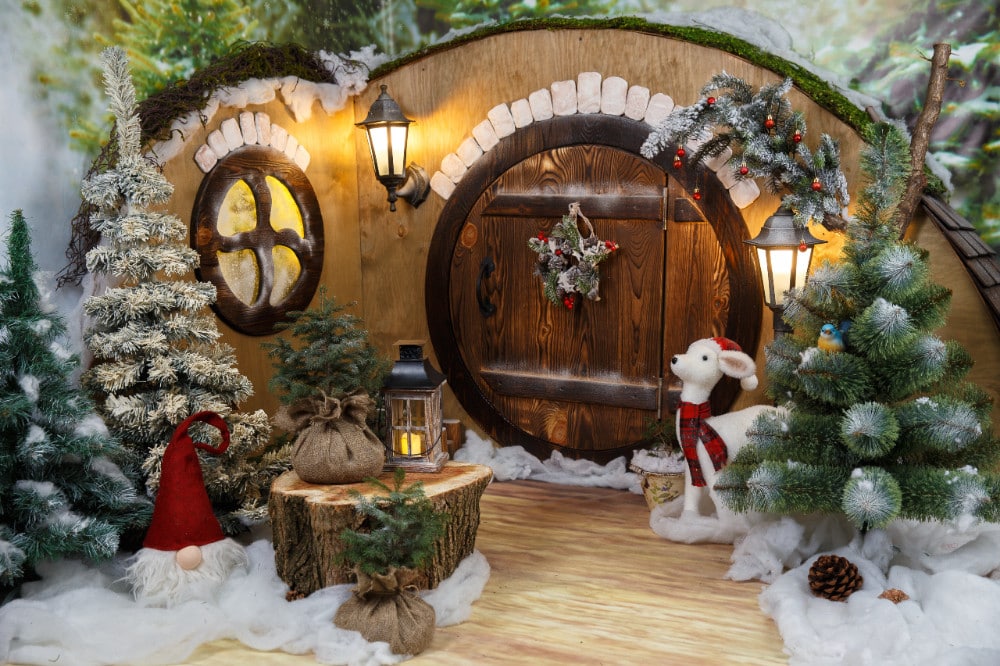
While Hobbits are known for enjoying the simple pleasures of life, they are also surprisingly resilient and able to forego the comforts of home when called to do so. Others marvel at their ability to resist temptation and despair, which can be largely attributed to the wholesome nature of life in Hobbiton. Being so thoroughly steeped in goodness has equipped Tolkien’s Hobbits for the trials of their journey, just as it can and should in our own lives.
Christmas is a time of nourishment and celebration, but it also brings with it the command to go forth and share the good news of Christ’s birth. We have spent Advent preparing our homes and our hearts to celebrate the first coming of Christ while also looking forward to his second coming. In “The Lord of the Rings,” Frodo has spent this season in the safety of Rivendell, a place of healing and preparation, readying himself to go forth into peril. So as we celebrate Christ having been born into the world, it is our job now to proclaim this truth.
Christ-like character
While we may catch a glimpse of Christ in Frodo’s character as he allows himself to be fully spent on the quest of destroying the One Ring, we can also see a reflection of Mary in his acceptance of the ring itself. Just as Mary offered her own fiat, we witness Frodo’s fiat as he freely offers himself up to the role that was chosen for him. And in leaving the safety of Rivendell, we are reminded of Christ’s birth into the world. In both instances, this marks the beginning of a dangerous and difficult task for the salvation of the world.
If we are to live this Christmas season like a Hobbit, we should strive to cherish this season of tender joy by slowing down and spending time with loved ones, quieting our hearts and minds from distractions and instead steeping ourselves in the goodness that surrounds us. Seek out what is wholesome and beautiful in your life and rest in it. But at the same time, we cannot forget that the path to holiness is one of sacrifice and discomfort. Much like Tolkien’s Hobbits, we must hold fast to our courage and step out onto the road ahead of us to meet whatever may lie ahead.
Kaitlyn Facista is a Catholic convert, wife, mother and Hobbit at heart. She is the creator of Tea with Tolkien, an online community inspired by the works and Catholic faith of J.R.R. Tolkien. Follow her on Twitter @TeawithTolkien.

